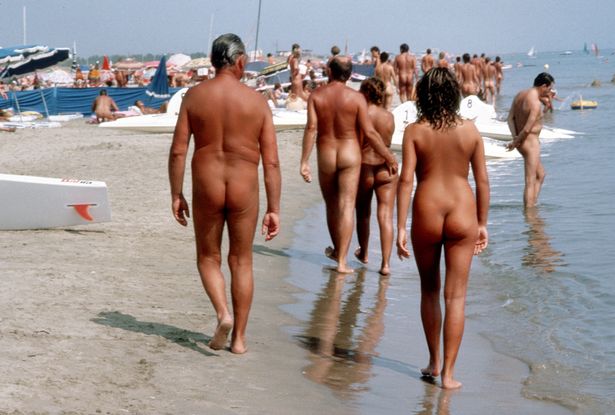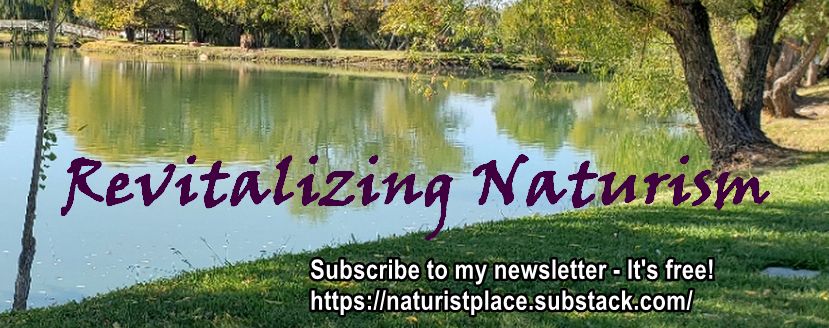
This is an (almost) incredibly good history of naturism in France, from its cautious beginnings in the later 1920s up to the incipience of its present state in the 1970s – a 50-year span. What makes it so excellent is that the author must have found and examined literally thousands of contemporary documents – news articles, public records, naturist magazines, etc. Today, France is probably the country with the most vital and flourishing naturist culture in the world. In part, this is due to the favorable climate of southern France on and near the Mediterranean coast, as well as a still decent climate (for Europe) on the Atlantic coast west of Bordeaux. But it’s also due to the prior existence, for roughly 25 years, of naturism in Germany. In spite of the conflict between France and Germany in WW I, many of the earliest naturists in France were visitors from Germany. Given Germany’s less agreeable climate for outdoor nudity, German nudists’ interest in French locales is less surprising.
France in the 1920s was not at all especially receptive to the culture of naturism as it had developed in Germany. Indeed, hostility in France towards social nudity was rather strong on account of two factors. The first was Article 330 of the Napoleonic Code, in force since 1804, which made public nudity a serious crime. One effect of that, aside from the threat to anyone who appeared naked in public, was to suppress sales of printed media – such as naturist publications – containing photographic depictions of nudity. The other factor was the noxious influence of the Catholic church in France, in comparison to the somewhat less toxic ethos of Protestanism in Germany.
In naturism’s early years in France there was a significant distinction between “naturism” (“naturisme”) and “nudism” (“nudisme”). The former was (at that time) considered to be mainly about health, exercise, and fitness, especially when practiced in the open air outdoors, with plenty of sunshine. Initially, French naturists favored minimal clothing that stopped a little short of full nudity. Nudists, on the other hand, placed at least as much importance, if not more, on full nudity as on the healthful aspects of naturism. The nudist influence was mainly due to the German visitors, who favored France for its more abundant sunshine. Probably the main factor that slowly increased the popularity of nudism over naturism in France was the effect of tourists from Germany and elsewhere in Western Europe – who were happy to spend freely for the experience of being naked in a benevolent climate. (In current times the distinction between “naturism” and “nudism” is considerably less clear-cut in most places.)
The development of naturism in France up until the 1970s was largely due to the efforts of just a few people. The first significant figures were the brothers Gaston and André Durville, who were both physicians – which comported well with an emphasis on healthful living. (There are brief biographical sketches of both in Wikipedia.) Although they did not champion full nudity (at first), they sought to establish reasonably private venues on islands for their followers. The first was on an island in the Seine outside of Paris. But they are best remembered for having established a naturist resort, Héliopolis, on the Île du Levant located off the Mediterranean coast. The Durvilles were initially naturists, but they found that many visitors to Héliopolis enjoyed full nudity in private locations away from the island’s main town. Eventually the Durvilles themselves enjoyed nudity, somewhat clandestinely.
At roughly the same time, Kienné de Mongeot, who was more of a nudist, attempted to establish a resort for visitors who also preferred full nudity. Kienné was less successful than the Durvilles, given that nudism at the time was less well tolerated than naturism by French authorities. He also favored more affluent visitors, which isn’t surprising given his somewhat aristocratic heritage. The book covers much more about subsequent developments of the nudist sort, such as Montalivet on the Atlantic coast northwest of Bordeaux, and Cap d’Agde on the Mediterranean coast. This isn’t the place, however, to recount the details. These developments, too, were mostly the work of individual entrepreneurs, after WW II, when full nudity had become considerably better tolerated by officials – and very popular with European tourists.
There’s one very important takeaway from this history. It is that opportunities for vacationing in places that welcome full nudity is very popular with tourists. And, consequently, that all the money nudist tourists bring with them has been very persuasive to local authorities in not only tolerating nudism, but actually welcoming it with open arms. Unfortunately, most authorities in North America and a few other locations around the world, where clothing-optional tourism is even tolerated, usually understand too poorly the potential economic benefits to their communities of encouraging nudist/naturist tourism.
The responsibility is squarely on naturists themselves to work towards convincing local officials in places that are well-suited for naturism that clothing-optional tourism is a great boost for the local economy. Allowing clothing-optional use of some nearby beaches and camping areas is a good place to start. That will attract both tourists and locals to investigate naturism (and support local businesses). The experience in France demonstrates that it can be done.

It is because of naturism and nudism back in Europe, which helped inspire the culture in the U.S. Starting in rural areas and then expanded into areas such as forests, lakes and private places. Either way it is considered it’s art and poetry.
Being. Nude. Is. Great. Way. To. Live